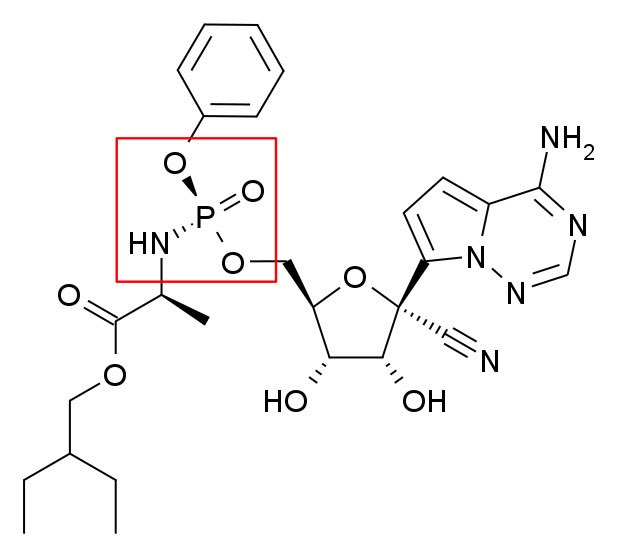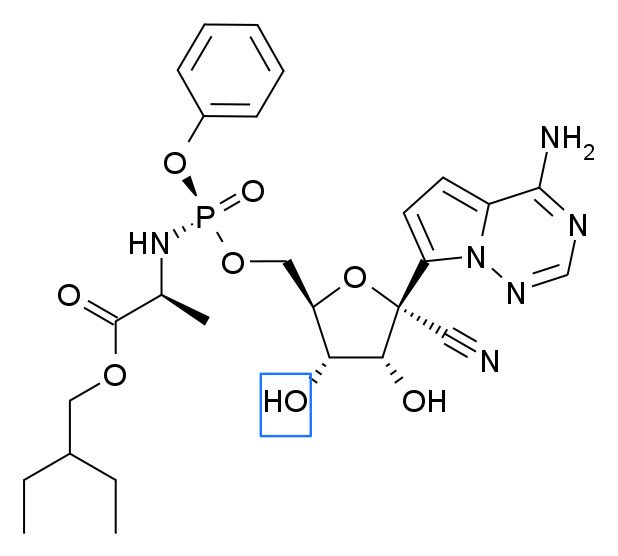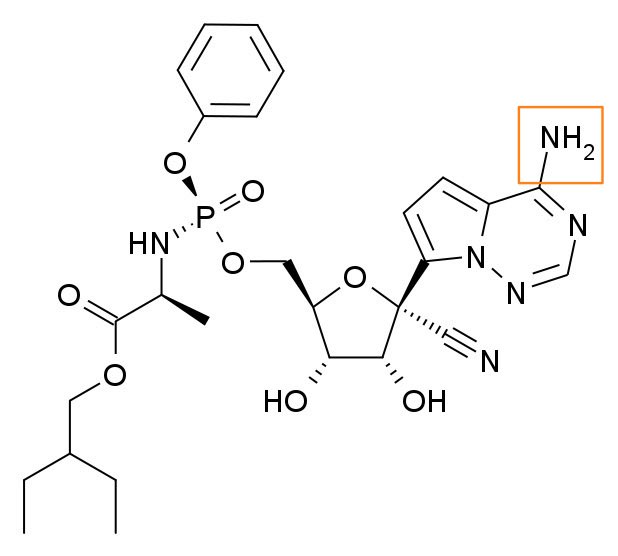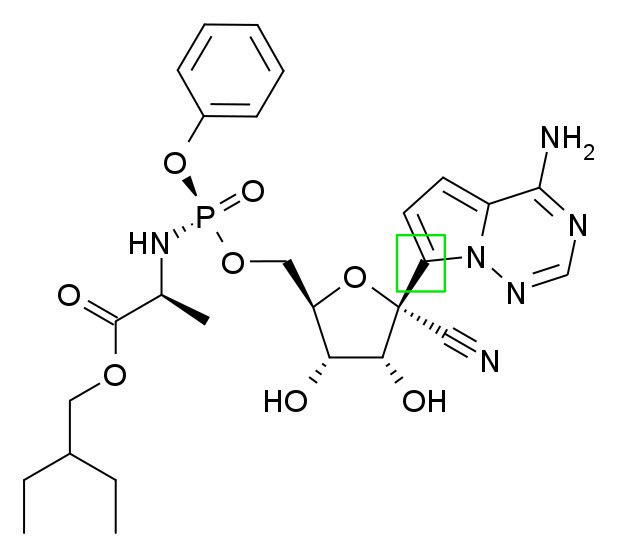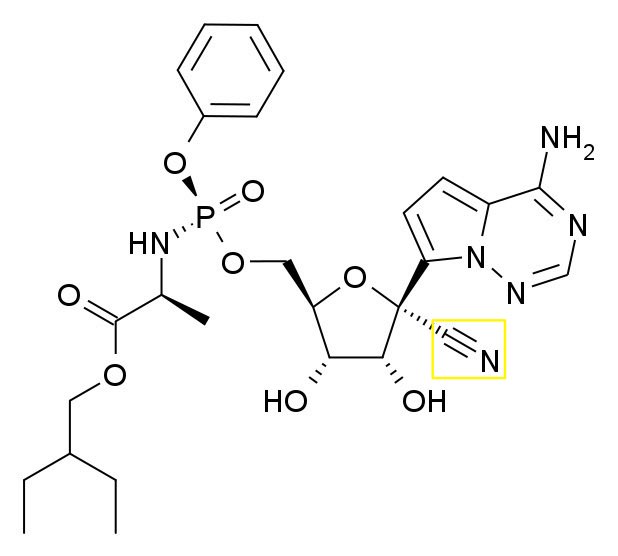What is Remdesivir?
This is a thread on the pharmacology of the drug & its hypothesized mechanism of action against #coronavirus #COVID19. I’ll also mention some of the anticipated side effects/toxicity, & why we shouldn’t get too excited with the NEJM study published yesterday.
This is a thread on the pharmacology of the drug & its hypothesized mechanism of action against #coronavirus #COVID19. I’ll also mention some of the anticipated side effects/toxicity, & why we shouldn’t get too excited with the NEJM study published yesterday.
Remdesivir is a prodrug that undergoes metabolic conversion in infected cells to active nucleoside TRIPHOSPHATE metabolite that inhibits viral RNA polymerases needed for viral replication.
Remdesivir (left) is a nucleoside analog, resembling the natural substrate adenosine (right) needed by the virus to replicate. It works by inhibiting the viral enzyme RNA-dependent RNA polymerase. Notice similarities between the drug’s structure & the natural substrate adenosine.
Each of the color coded boxes I added to the structure of the drug depicts a CRITICAL moiety in what we pharmacologists call “structure-activity-relationship” or SAR. Without these vital chemical molecules that are STRATEGICALLY placed, the drug is LESS efficacious. Let’s discus.
Red box: Ester-phosphate group that renders the drug more lipophilic by hiding the positive charges on the phosphate. Otherwise, the drug is not lipid soluble enough to penetrate the patient’s cells in which the virus resides. ACTIVATION of the drug to triphosphate occurs here.
Blue box: Hydroxyl group needed for chain termination. This is the main player that tricks the viral machinery into thinking Remdesivir is the natural substrate adenosine. Once the drug hooks to the enzyme, it “jams” the enzyme and makes it unable to build new genomic sequence.
The orange box depicts the amine group in which the nitrogen atoms act as proton donators/recipients. This is necessary to maintain electrical neutrality and provides Remdesivir (aka “pseudo adenosine”) with the proper cover to attach to uracil and go unnoticed by the virus.
The green box depicts what we call C-nucleoside bond. It ORIENTS the 3D structure of the drug properly in space and provides rugged and robust resistance against degradation by the virus.
Yellow box (my personal favorite feature) depicts the 1-cyano bridge. Without it, Remdesivir still works against coronavirus, but it’ll be unable to discriminate against human cells, and will attack the mitochondria (power house of human cells) causing major side effect/toxicity.
Remdesivir follows first-order pharmacokinetics and is anticipated to be hepatically metabolized and renally cleared. The anticipated terminal half-life is between 35-45 hours with an accumulation ratio between 2.5-3.5.
The anticipated dose is 75-200 mg PO daily for 12-14 days.
The anticipated dose is 75-200 mg PO daily for 12-14 days.
Anticipated major drug interactions will be with BRCP/P-gp inhibitors, & CYP3A4, CYP2C19 inducers/inhibitors. It’s unknown if there will be any major cardiac toxicity to interactions (especially with class III antiarrhythmics).
No pregnancy/lactation data available at this time.
No pregnancy/lactation data available at this time.
Side effects/toxicity of Remdesivir is anticipated to be minimal because:
- it targets an enzyme available only in the virus but not humans
- the 1-cyano group makes the drug nontoxic in the human mitochondria
“Start up syndrome” like nausea, vomiting, skin rash is anticipated.
- it targets an enzyme available only in the virus but not humans
- the 1-cyano group makes the drug nontoxic in the human mitochondria
“Start up syndrome” like nausea, vomiting, skin rash is anticipated.
The Remdesivir study published in NEJM is FLAWED & should be interpreted with CAUTION. https://www.nejm.org/doi/full/10.1056/NEJMoa2007016
SOME">https://www.nejm.org/doi/full/... of the issues with the study:
-No control group
-Selection bias
-Lack of well-defined primary endpoint
-Slow prescribing of Remdesivir
-Pharma sponsorship
#Covid_19
SOME">https://www.nejm.org/doi/full/... of the issues with the study:
-No control group
-Selection bias
-Lack of well-defined primary endpoint
-Slow prescribing of Remdesivir
-Pharma sponsorship
#Covid_19
Last but not least, this thread is NOT medical advice and is based on **MY OWN** analysis as a clinical pharmacologist. More data from RCTs and phase 4 (post-marketing studies) are needed to understand the full scope of Remdesivir in the treatment of #COVID19 #coronavirus.

 Read on Twitter
Read on Twitter


